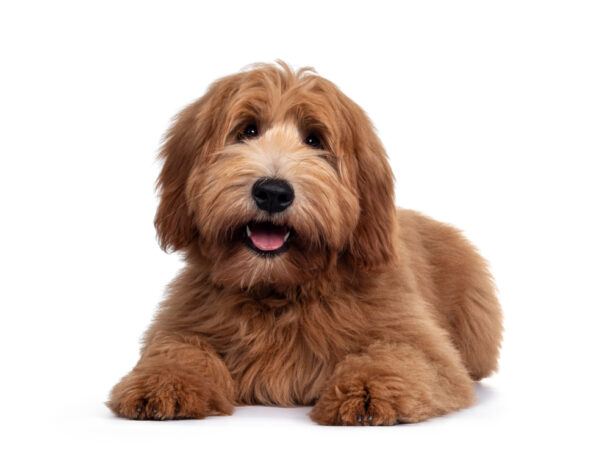LifeWithMyDogs is supported by our audience. When you purchase through one of our links, we may earn a small affiliate commission. As an Amazon Associate I earn from qualifying purchases. Your cost is not affected.
**********
Grooming tips for short-haired dogs encompass a range of essential practices aimed at maintaining their skin, fur, and overall well-being. I relate to that since I have some furry little friends of my own.
Having taken care of short-haired dogs, I understand the unique joys and responsibilities that come with maintaining the health and happiness of these beloved companions. Grooming isn’t just a task; it’s a cherished ritual that strengthens the bond between pet and owner, ensuring our canine friends look and feel their best. While short-haired breeds may seem to require less maintenance compared to their long-haired counterparts, their grooming needs are equally vital for their overall well-being.
In this comprehensive guide, we’ll explore the essential care practices tailored specifically for short-haired dogs. From mastering brushing techniques to expert nail care, from perfecting bathing rituals to understanding when professional grooming is necessary, we’ll cover it all. Drawing from my own firsthand experience caring for short-haired pups, as well as insights from experts in the field, we’ll embark on a journey to ensure your furry friend receives the utmost care and attention they deserve.
So, let’s dive into the art of grooming together, learning how to best care for our beloved short-haired companions every step of the way.
Grooming Tips for Short-Haired Dogs: Essential Care Practices
Grooming a short-haired dog might seem easier than caring for a long-haired breed, but it comes with its own set of challenges and requirements. It’s because, despite the shorter coat, maintaining your dog’s skin and fur health is essential to their overall well-being.

Now, regular grooming helps to minimize shedding, reduces the possibility of skin problems, and provides an opportunity to check for signs of infections or parasites. So accustoming your dog to a consistent grooming routine is also a bonding experience and can serve as a regular check-up to ensure their nails are trimmed, ears are clean, and teeth are clean. With that in mind, knowing which tools and techniques to use for different grooming tasks can make the process more efficient and comfortable for both you and your pet.
Remember that while some aspects of grooming can be comfortably done at home, there may be situations where a professional groomer is needed, especially for tasks that require a certain level of expertise or for dogs that are not used to being handled.

Bark-Worthy Bits
- Regular grooming aids in shedding management and skin health.
- A proper routine includes nail trimming, ear and eye cleaning, and dental care.
- Some grooming tasks may necessitate the skills of a professional groomer.
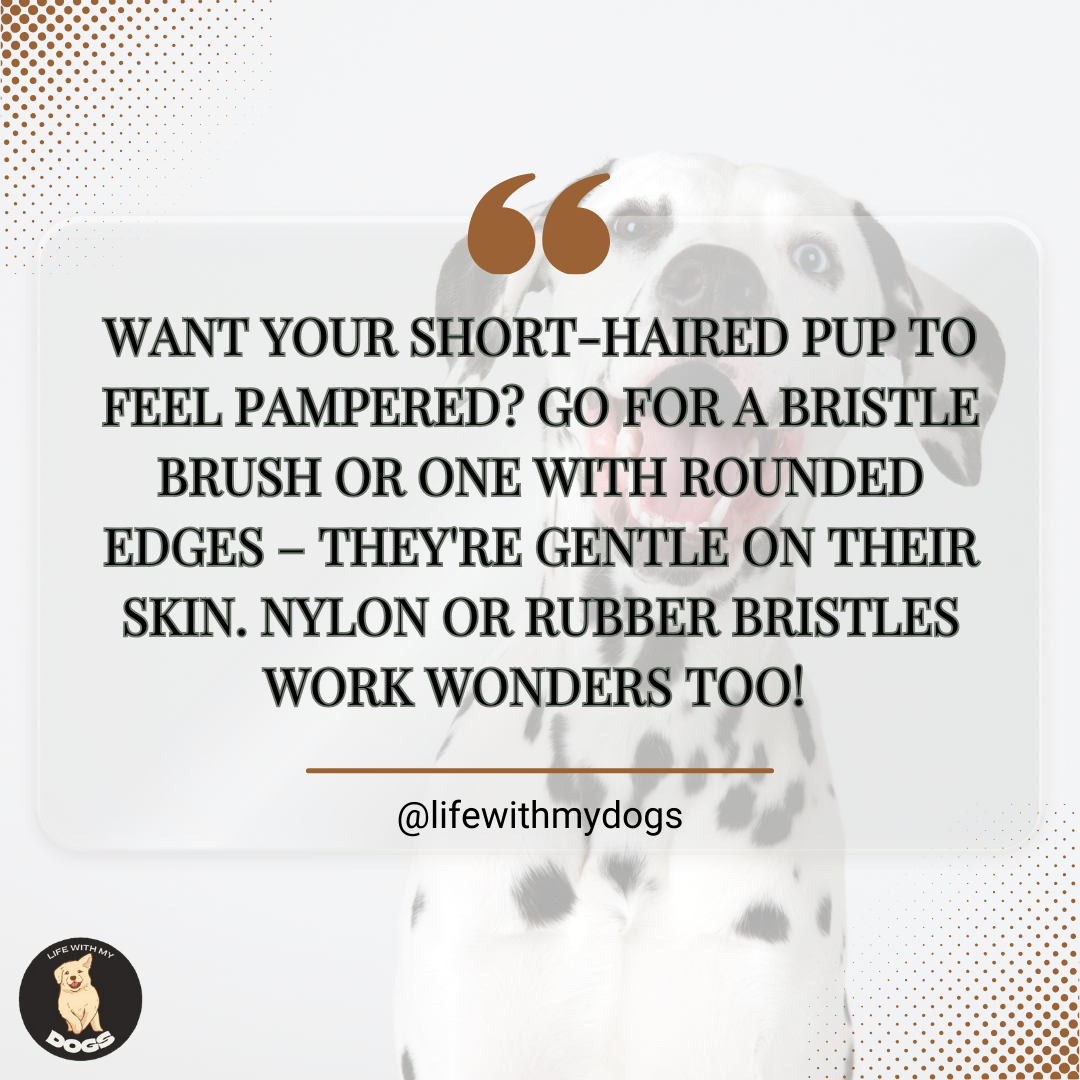
Understanding Short-Haired Dog Breeds
When grooming your short-haired dog, it’s important to recognize their specific needs due to their coat characteristics and the traits of their breed.
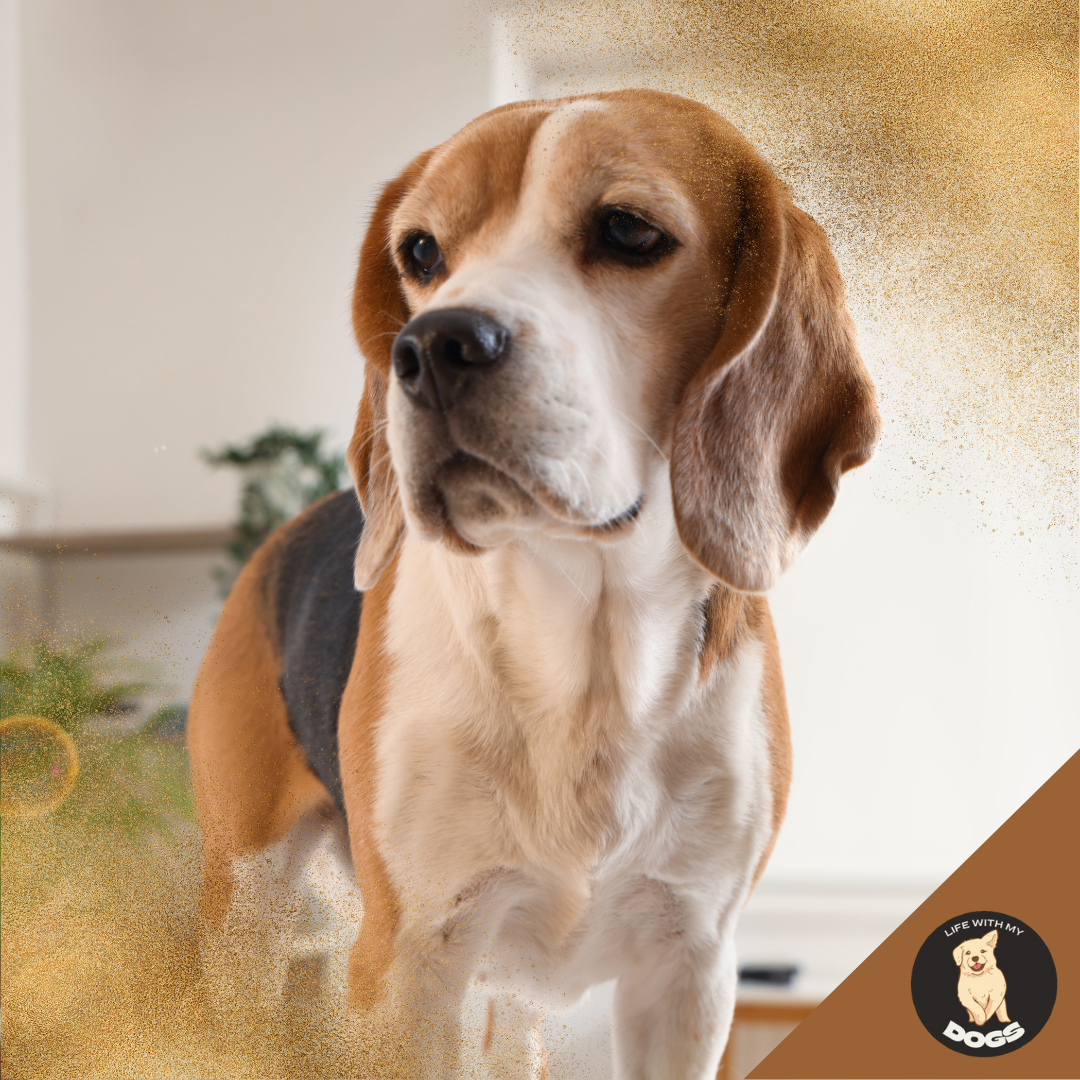
Characteristics of Short-Haired Dogs
Short-haired dogs have a single coat that lacks the thick undercoat found in long-haired breeds. This makes their grooming needs less intensive, but you should still maintain regular care to keep their coat healthy.
These dogs often shed more than you might expect, so frequent brushing can help manage loose fur.
Common Short-Haired Breeds
A variety of dog breeds fall under the short-haired category, each with their own grooming considerations:
- Beagle: Known for their resilience and low-maintenance coat.
- Boxer: They possess a smooth, tight skin that requires minimal grooming.
- Dalmatian: Their coats are short, dense, and sleek, needing regular brushing to minimize shedding.
- Great Dane: Large in size, their short coat still requires regular care to maintain shine.
Basic Grooming Essentials
Proper grooming is critical for your short-haired dog’s health and hygiene. With the right tools and an organized space, you can effectively maintain your dog’s coat.
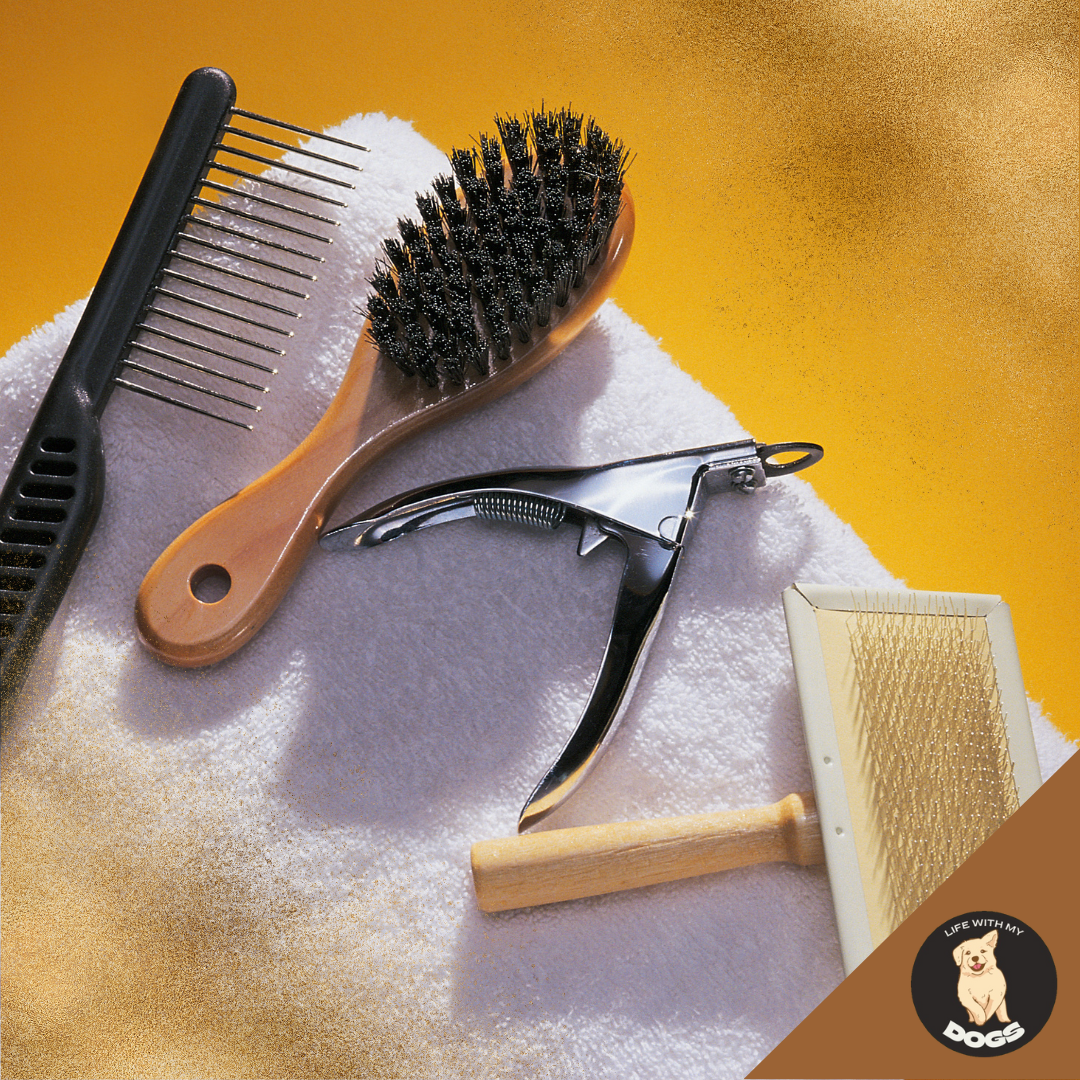
Grooming Tools and Supplies
- Brushes: Use a bristle brush for everyday grooming to remove loose fur and distribute natural oils.
- Shampoo: Choose a gentle dog shampoo that won’t strip essential oils from your dog’s skin.
- Towels: Soft towels are essential for drying your dog after a bath.
- Blow Dryer: If needed, use a blow dryer on a low setting, but be cautious to avoid burns as recommended by experts at Wag!.
Setting Up a Grooming Space
- Bathing Area: Choose a spot that is non-slip and can be easily cleaned, such as a tub or outdoor area.
- Grooming Table: A table with a non-skid surface ensures safety and control during grooming sessions.
- Supplies Storage: Keep all grooming tools within reach in an organized manner to streamline the grooming process.
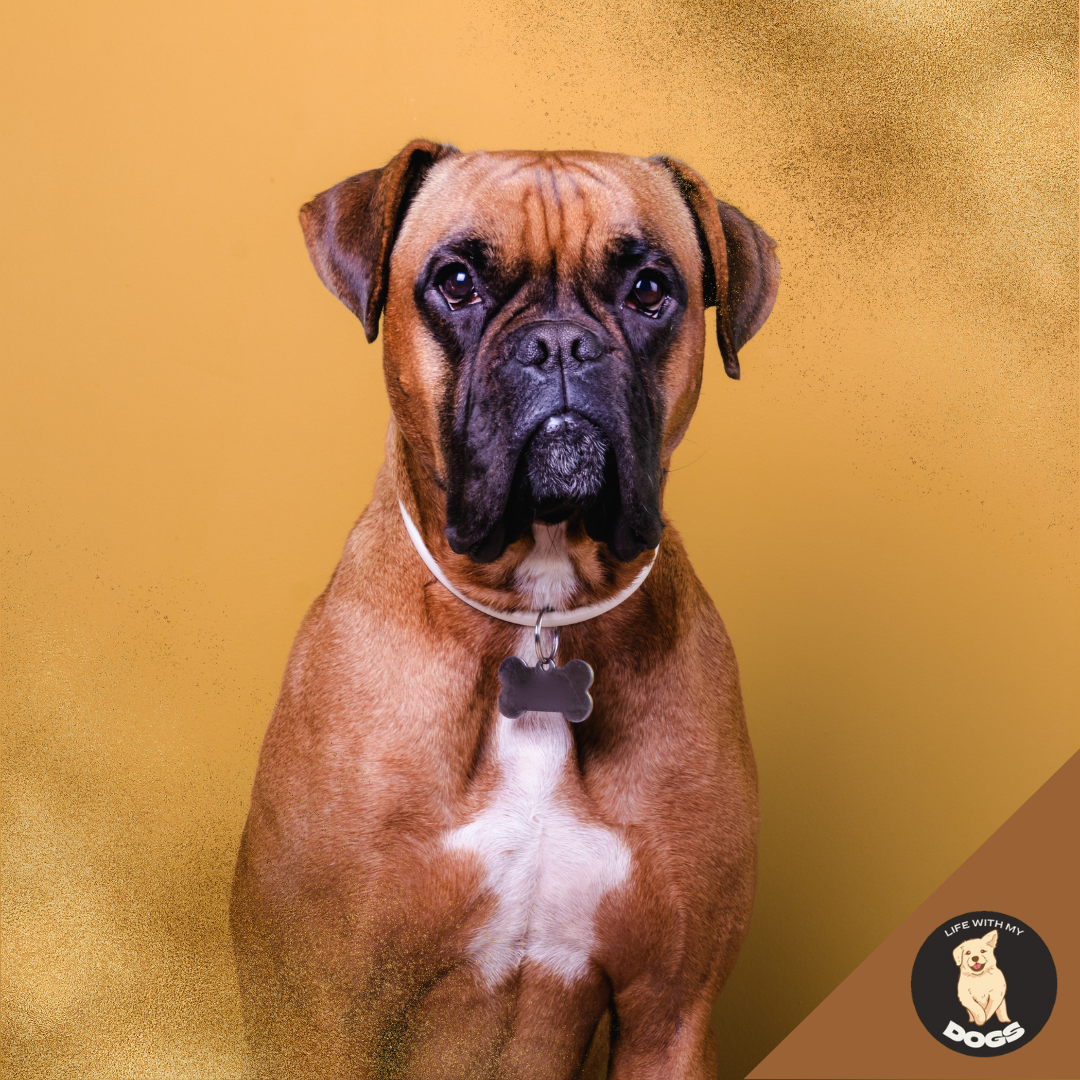
Brushing Techniques
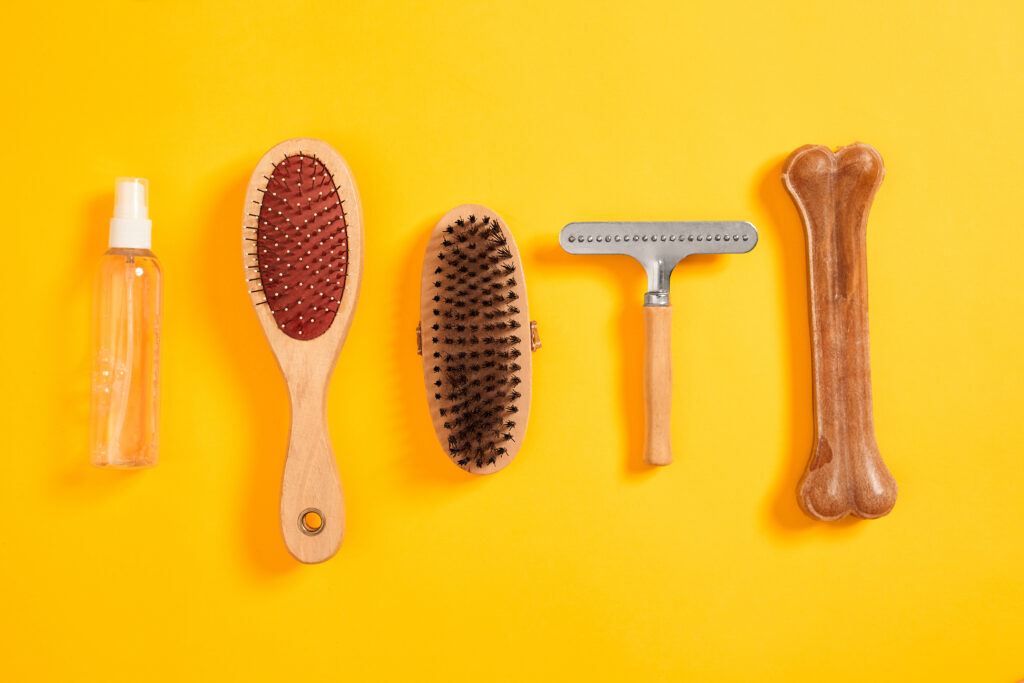
To maintain your short-haired dog’s coat healthy and shiny, it is crucial to use the right brush and technique.
Brushing not only helps to distribute natural skin oils but also removes dirt and loose fur.
Choosing the Right Brush
For short-haired dogs, selecting a stiff bristle brush is essential. It’s designed to capture loose fur and stimulate the skin without causing irritation.
Alternatively, a rubber brush can be gentle and effective, especially if your dog has sensitive skin.
Frequency of Brushing
You should brush your dog at least once a week. However, during periods of heavy shedding, you may need to brush more frequently, possibly every few days, to manage the excess hair and maintain your dog’s coat cleanliness.
Brushing Best Practices
Begin by brushing in the direction of hair growth to remove dead hair and dirt.
Be especially gentle around sensitive areas like the face and paws.
If using a blow dryer after a bath, always use a low heat setting to prevent skin burns.
Regular brushing not only keeps your dog’s coat in good condition but also strengthens your bond with your pet.
Bathing Your Dog
Bathing plays a crucial role in maintaining the health of your dog’s coat and skin. Knowing the right products and methods can make the process effective and stress-free for both you and your pet.

Selecting Appropriate Shampoo
When choosing a shampoo for your short-haired dog, look for gentle dog shampoos specifically formulated for canines.
Human shampoos are not an option as they may harm your dog’s skin.
For sensitive skin, hypoallergenic or oatmeal-based products are an excellent choice to provide a soothing bath experience.
Bath Time Procedure
Prepare for bath time by brushing your dog to remove any loose fur, which can be more prevalent during bathing.
Wet your dog thoroughly and apply a small amount of shampoo, lathering well.
Carefully avoid sensitive areas like the face and eyes.
Shampoo should be massaged from the body towards the head; the wikiHow guide on bathing a dog can offer additional tips on keeping your dog calm and covered during the wash.
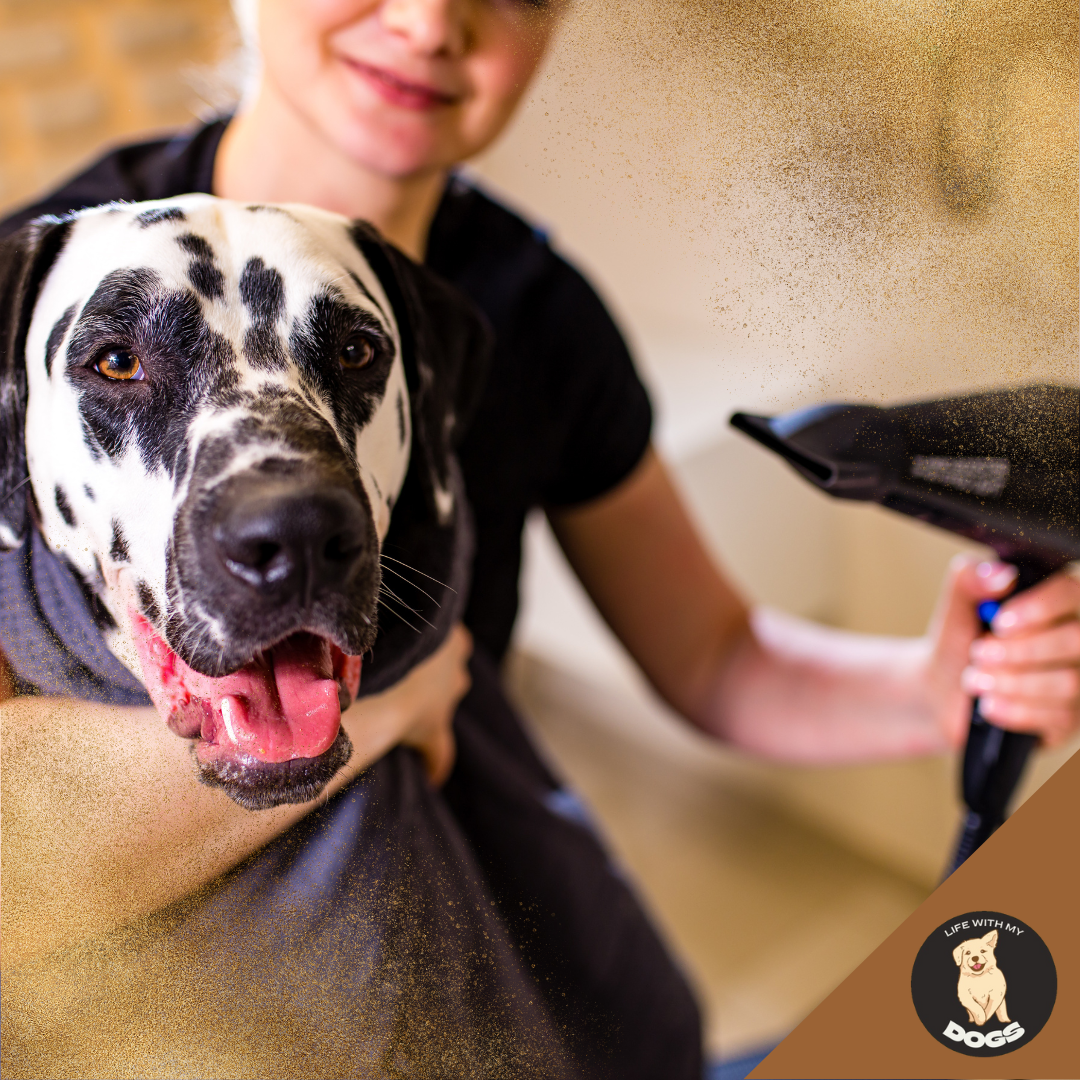
Drying Methods
After rinsing, one safe method for drying is to towel dry your dog promptly, followed by allowing your pet to air dry.
If you prefer to speed up the process, you can use a blow dryer on a low heat setting.
Always be cautious to prevent burns, as short-haired dogs have less fur to protect their skin.
Wag! provides insights into the importance of careful drying, emphasizing the need to be gentle to avoid any potential discomfort.
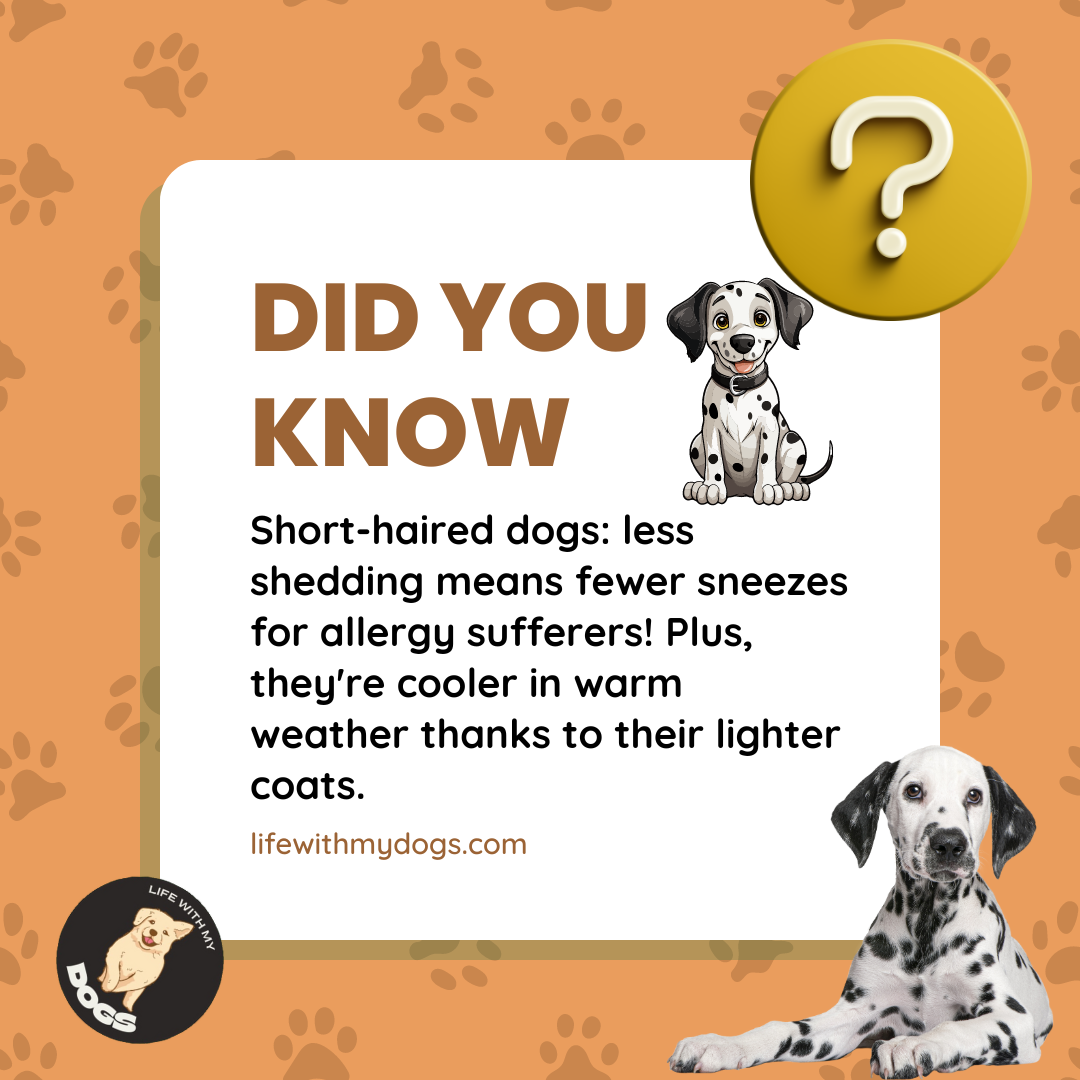
Nail Care
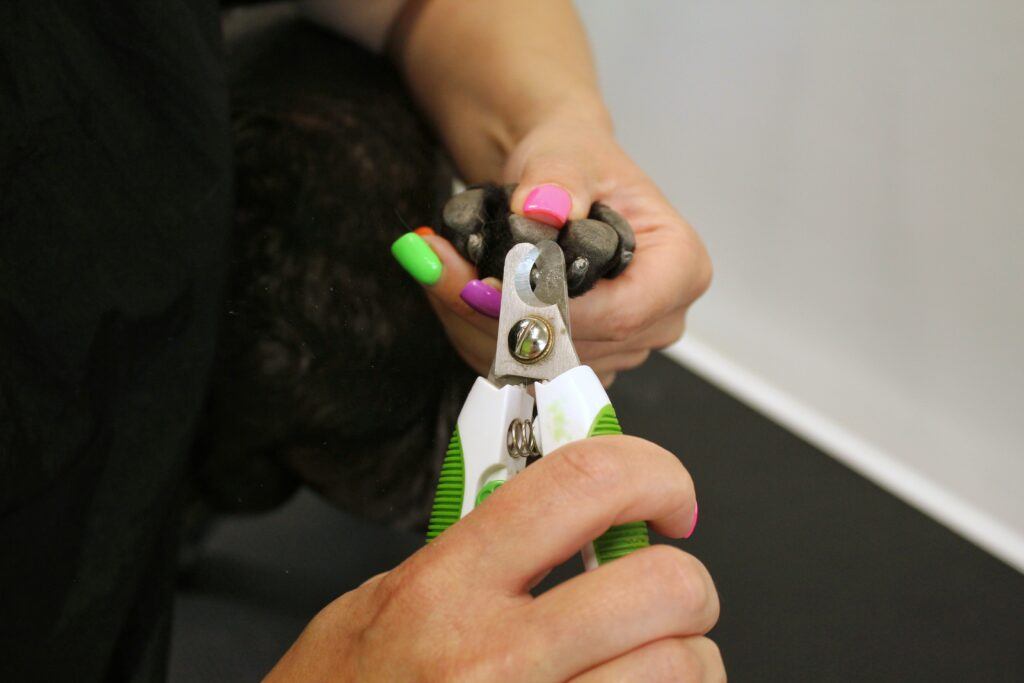
Maintaining the nails of your short-haired dog is essential for their comfort and mobility. Overgrown nails can cause pain and structural issues.
When to Trim Nails
You should check your dog’s nails once every two weeks; trim them as needed to prevent overgrowth.
Nails that touch the ground during normal walking need trimming to maintain proper paw alignment.
Nail Trimming Techniques
Preparation: Gather the right tools—a clipper or grinder, styptic powder, and treats. Make your dog familiar with these tools to reduce anxiety.
Clipping Method:
- Hold your dog’s paw firmly but gently.
- Identify the quick, the pinkish part inside the nail, to avoid bleeding.
- Clip small sections of the nail at a time at a 45-degree angle.
Grinding Method:
- Use a grinder with a gentle touch, stopping before reaching the quick.
- Offer your dog praise and treats during and after the process to associate nail trimming with positive experiences.
Ear and Eye Maintenance
Maintaining your short-haired dog’s ear and eye health is crucial for preventing infections and ensuring your pet’s overall well-being. Regular checks and gentle cleanings can help keep common issues at bay.
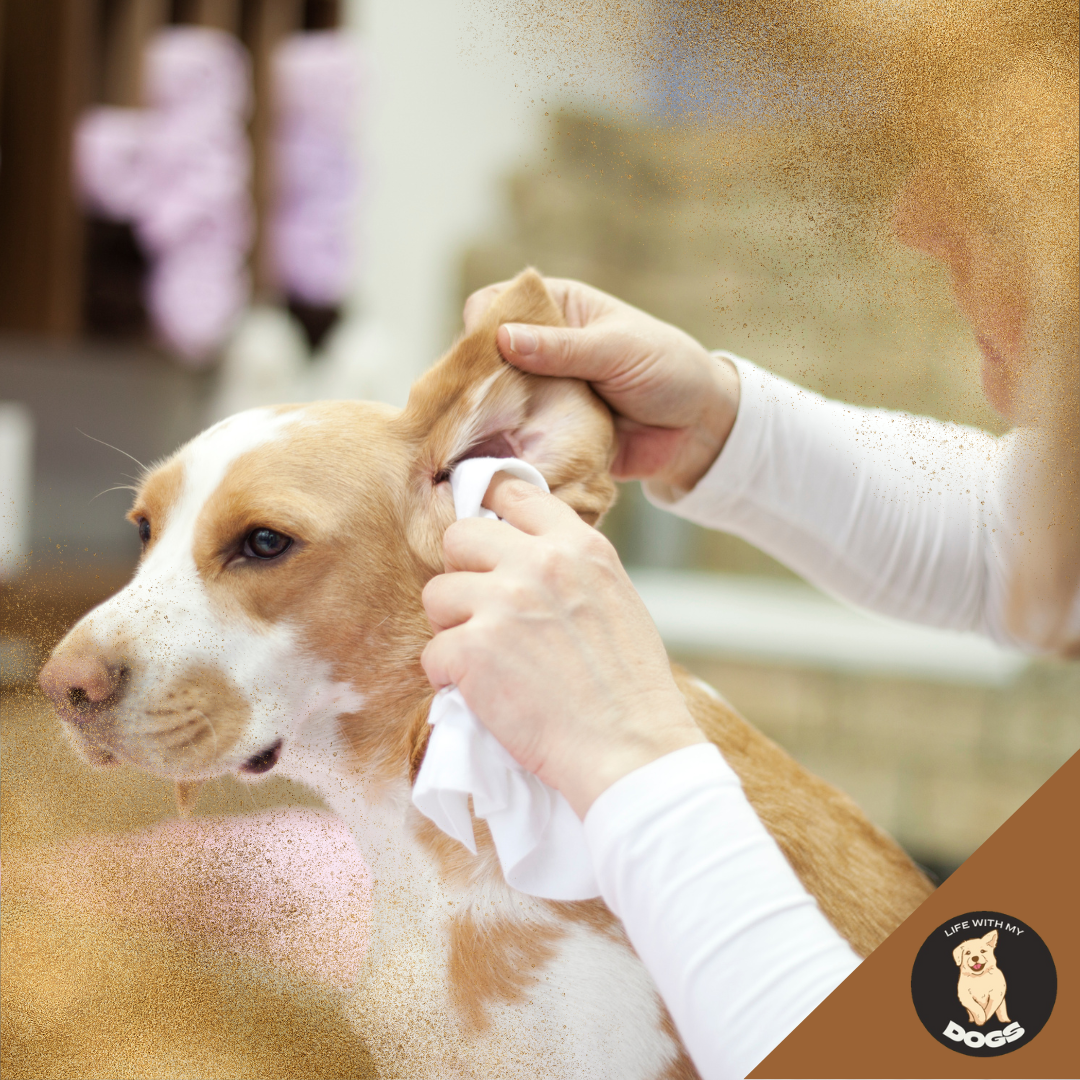
Cleaning Ears Safely
To clean your dog’s ears, you’ll need a canine ear-cleaning solution and cotton balls or gauze.
Do not use cotton swabs as they can damage the ear canal.
- Begin by inspecting the ear for redness, discharge, or an unusual odor.
- Apply a vet-recommended ear cleaning solution into the ear canal.
- Gently massage the base of the ear for 30 seconds to break up any debris.
- Allow your dog to shake its head; then carefully wipe the outer ear canal with cotton balls or gauze.
Remember: Never insert cleaning tools into the ear canal.
Eye Cleaning Tips
Eyes should be clear and bright. For routine cleaning:
- Use a soft, damp cloth to wipe away any dirt or debris around the eyes.
- Wipe from the inner corner of the eye outward and use a separate area of the cloth for each eye to avoid the risk of cross-contamination.
If you notice persistent redness, swelling, or your dog seems to be in discomfort, seek veterinary care immediately. Eye issues can escalate quickly and may require professional treatment.
Dental Hygiene
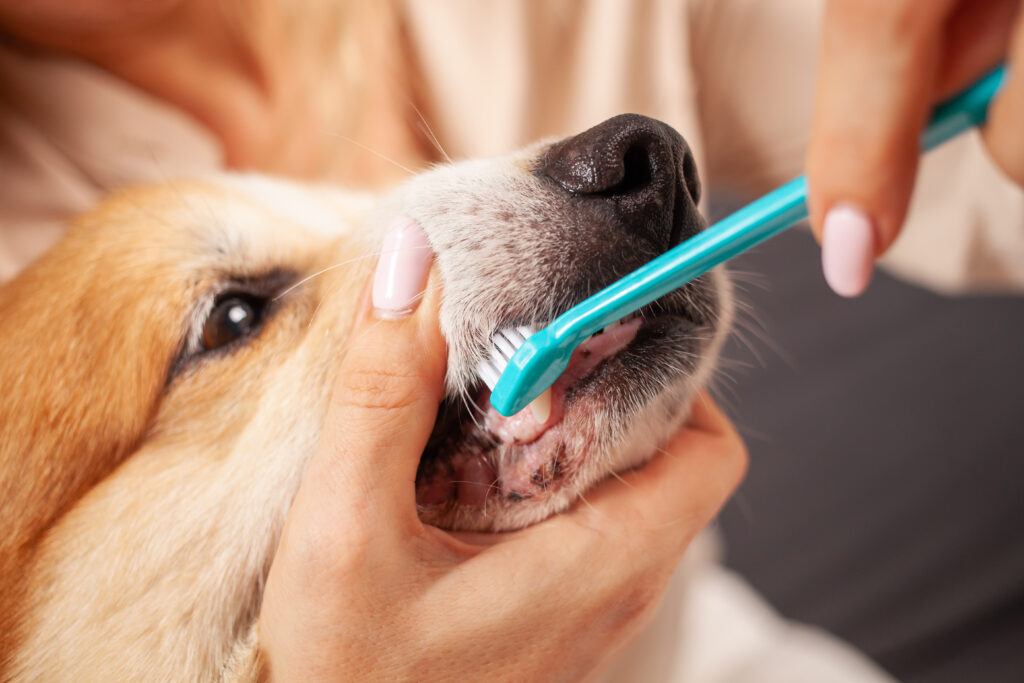
Maintaining optimal oral health is as important for your short-haired dog as it is for any pet. Regular dental care helps prevent the buildup of plaque and tartar, which can lead to gum disease and tooth decay.
Teeth Brushing Routine
You should brush your dog’s teeth daily using a dog-specific toothbrush and toothpaste designed for canines.
Start by gently introducing the brush to your dog’s mouth to ensure they’re comfortable. Then, carefully brush in circular motions, focusing on each tooth and the gum line.
Dental Treats and Toys
Incorporate dental treats and toys to complement your dog’s brushing routine.
These are formulated to reduce plaque and freshen breath.
Always choose size-appropriate options and monitor your dog to ensure they are chewing safely.
Consistency and Scheduling
Establishing a regular grooming schedule and maintaining consistent routines are key to the health and well-being of your short-haired dog.
Regular Grooming Schedule
You should brush your dog at least once a week to keep their coat in good condition and bathe them once a month.
Scheduling these grooming sessions helps in reducing shedding and maintaining healthy skin.
Keeping Consistent Routines
A consistent grooming routine not only helps in preventing mats and reducing shedding but also allows you to check for any skin issues or parasites regularly.
For example, during each grooming session, inspect your dog’s ears, paws, and nails to ensure they are healthy.
Professional Grooming
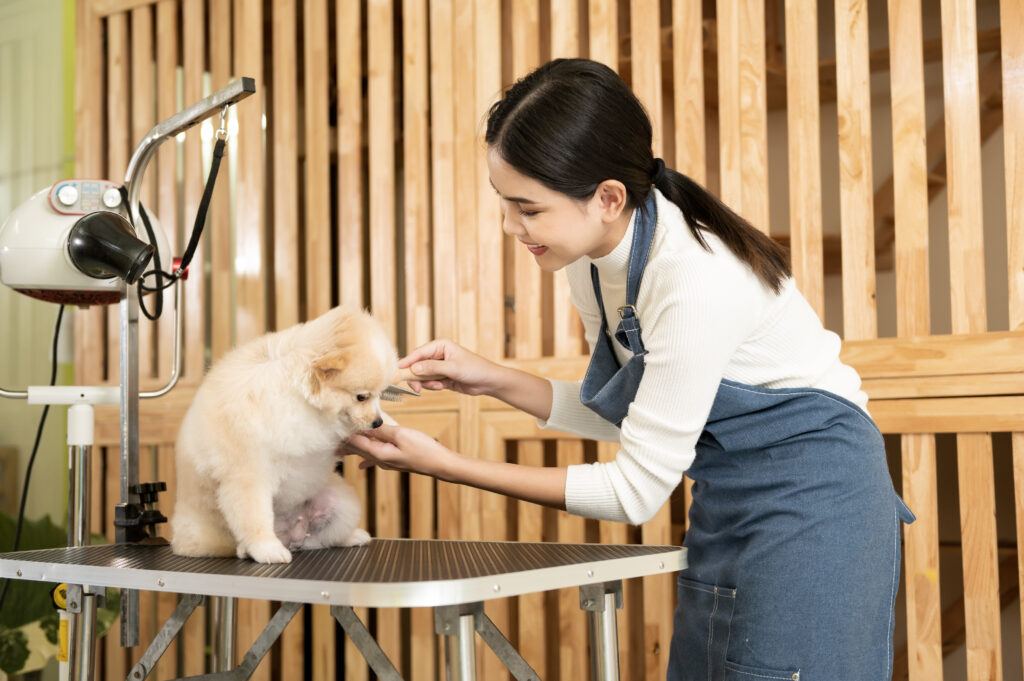
When it comes to maintaining your short-haired dog’s coat, professional grooming can ensure a healthy, sleek appearance.
Not only is the aesthetic important, but so is your dog’s comfort and well-being.
When to Seek Professional Help
You might consider professional grooming under the following circumstances:
- Skin Conditions: If your dog has skin issues such as allergies or hot spots, a professional groomer is skilled in handling these sensitivities.
- Nail Trimming: This can be a delicate task, so it’s often best left to professionals who know how to trim without causing injury.
- Intensive Cleaning: Sometimes a deep cleanse is needed to remove excess oils and dirt that regular bathing can’t tackle.
Here are some indicators that it’s time for a professional grooming session:
- Your dog’s coat feels greasy or has a strong odor, even after a bath.
- You’ve noticed your dog scratching more than usual, or there are visible signs of irritated skin.
- The nails are curling or clicking on the floor, which means they’re too long.
Choosing a Professional Groomer
To select the right groomer for your short-haired dog, ensure the following:
- Experience: Look for groomers with specific experience in short-haired breeds, as indicated in services like Wag’s guide to grooming short-haired dogs.
- Facility: Choose a clean, well-maintained facility. A good environment means less stress for your pet.
- Reviews: Read customer reviews or ask for referrals to gauge satisfaction.
Consider asking these questions when evaluating a groomer:
- What is your experience with my dog’s breed?
- Can I tour your grooming facility?
- How do you handle dogs with special needs or anxiety?
Seasonal Grooming Considerations
Depending on the season, your short-haired dog will have different grooming needs. Address these to maintain their coat’s health and comfort throughout the year.
Summer Grooming Tips
During summer, your dog’s risk of overheating increases.
Ensure you provide a cool and shaded space for them to rest.
Use a shed control shampoo to help reduce excess fur, allowing your dog’s skin to breathe better.
Keep their coat clean to prevent skin irritations from sweat and dirt buildup.
- Regularly bathe your dog to remove dirt and allergens.
- Avoid shaving: Your dog’s coat provides protection from the sun.
Winter Grooming Tips
In winter, your dog’s skin can become dry.
Boost your dog’s coat health with a nutrient-rich diet that promotes oil production for a healthier coat.
Keep their bed warm and dry to prevent skin irritations and use a leave-in conditioner to combat dryness.
- Avoid over-bathing which can strip natural oils.
- Towel-dry your dog thoroughly, especially the paws, to prevent chapping.
Grooming Tips for Short-Haired Dogs: Ensuring Health and Happiness
We have delved into the essential grooming practices tailored specifically for short-haired dogs, encompassing brushing techniques, bathing procedures, nail care, ear and eye maintenance, dental hygiene, establishing grooming schedules, seeking professional help, and seasonal grooming considerations. Each aspect, drawn from personal experience and insights from experts, contributes to the overall well-being of our beloved furry companions.

I am grateful for the time you’ve dedicated to reading through this comprehensive guide. It’s my hope that by sharing my experiences, I can assist fellow dog owners in providing the best care for their cherished pets. Remember, the bond we share with our dogs is strengthened through attentive grooming rituals.
As you embark on your grooming journey with your short-haired dog, I encourage you to tailor these practices to suit your pet’s individual needs and preferences. Together, let’s ensure our furry friends thrive in health and happiness.
Thank you for your attention, and may your grooming sessions be filled with joy and shared moments with your canine companions!
Frequently Asked Questions
This section addresses common questions about the care and maintenance of your short-haired dog’s coat. Learn how to reduce shedding, select the best tools, and understand the need for professional grooming services.
What are the best practices for grooming a short-haired dog at home?
Brushing your short-haired dog regularly with the appropriate tools can help keep their coat shiny and healthy while controlling shedding.
Always brush in the direction of hair growth and use a mild dog shampoo during baths.
How can I reduce shedding in my short-haired dog?
To manage shedding, incorporate a shed control shampoo and consider adding omega fatty acids to your dog’s diet to promote a healthy coat.
Regular brushing sessions will also help to remove loose hair.
Is it necessary to give short-haired dogs regular haircuts?
Generally, short-haired dogs do not require frequent haircuts.
Their coat naturally stays short and neat; however, occasional trims may be necessary to remove damaged or split ends.
What type of brush is ideal for a short-haired dog's coat?
A soft bristle or rubber brush is ideal for short-haired dogs. These brushes efficiently remove loose fur without irritating the skin.
How frequently should I groom my short-coated dog?
Regular brushing should be done at least once a week, and bathing should be limited to once a month or as needed.
Overbathing can strip the coat of natural oils and lead to skin irritations.
Are professional grooming services recommended for short-haired dogs?
Professional grooming can be beneficial for toenail trimming, ear cleaning, and teeth brushing, which might be challenging to accomplish at home.
For regular coat maintenance, at-home grooming is typically sufficient for short-haired breeds.


